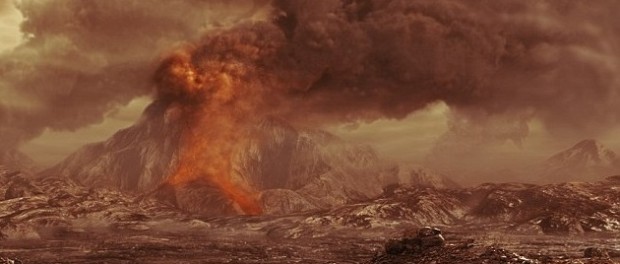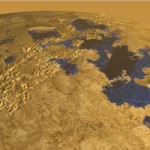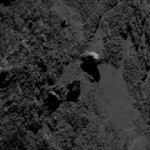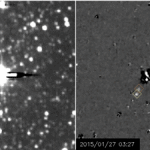ESA Finds Active Volcanoes on Venus

The European Space Agency has found evidence from their Venus Express Orbiter that not only are their volcanoes on Venus, but they are quite active still today.
ESA’s Venus Express, which completed its eight-year study of the planet last year, conducted a range of observations at different wavelengths to address this important question. (See Video Below)
In a study published in 2010, scientists reported that the infrared radiation coming from three volcanic regions was different to that from the surrounding terrain. They interpreted this as coming from relatively fresh lava flows that had not yet experienced significant surface weathering. These flows were found to be less than 2.5 million years old, but the study could not establish whether there is still active volcanism on the planet.
An additional piece of evidence was reported in 2012, showing a sharp rise in the sulphur dioxide content of the upper atmosphere in 2006–2007, followed by a gradual fall over the following five years. Although changes in wind patterns could have caused this, the more intriguing possibility is that episodes of volcanic activity were injecting vast amounts of sulphur dioxide into the upper atmosphere.
Now, using a near-infrared channel of the spacecraft’s Venus Monitoring Camera (VMC) to map thermal emission from the surface through a transparent spectral window in the planet’s atmosphere, an international team of planetary scientists has spotted localised changes in surface brightness between images taken only a few days apart.
“We have now seen several events where a spot on the surface suddenly gets much hotter, and then cools down again,” says Eugene Shalygin from the Max Planck Institute for Solar System Research (MPS) in Germany, and lead author of the paper reporting the results in Geophysical Research Letters this month.
“These four ‘hotspots’ are located in what are known from radar imagery to be tectonic rift zones, but this is the first time we have detected that they are hot and changing in temperature from day to day. It is the most tantalising evidence yet for active volcanism.”
The hotspots are found along the Ganiki Chasma rift zone close to the volcanoes Ozza Mons and Maat Mons. Rift zones are results of fracturing of the surface, which is often associated with upwelling of magma below the crust. This process can bring hot material to the surface, where it may be released through fractures as a lava flow.








Pingback: Payday loans()